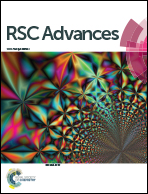Potential of brackish water and brine for energy generation by salinity gradient power-reverse electrodialysis (SGP-RE)
Abstract
In the present work, a salinity gradient power-reverse electrodialysis (SGP-RE) unit was tested for the production of electrical energy by exploiting the chemical potential of real brackish water and exhaust brine from a solar pond. A cross-flow SGP-RE module (REDstack B.V.), equipped with AEM-80045 and CEM-80050 membranes specifically developed by Fujifilm Manufacturing Europe B.V. within the EU-funded project REAPOWER (“Reverse Electrodialysis Alternative Power Production”), was able to generate a maximum power density (expressed in W m−2 membrane pair – MP) of 3.04 W m−2 MP when operated with pure NaCl aqueous solutions (0.1 M in low concentration compartment – LCC, 5 M in high concentration compartment – HCC) at 20 °C and at a recirculation rate of 20 L h−1. However, a drastic reduction to 1.13 W m−2 (−63%) was observed when feeding the SGP-RE unit with artificial multi-ion solutions mimicking real brackish water and exhaust brine. Further experimental activity allowed to identify Mg2+ ion as responsible for the significant increase in stack resistance and consequent depletion in SGP-RE performance. Therefore, specific softening treatments of the real solutions should be considered in order to maintain the process efficiency at practical level.


 Please wait while we load your content...
Please wait while we load your content...